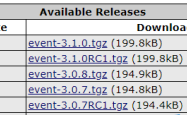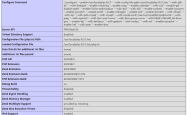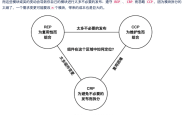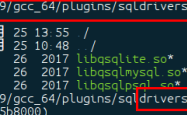Laravel 自动生成验证的实例讲解:login / logout
Laravel 自动授权讲解
看到这部分文档,经常看见的一句话就是php artisan make:auth,经常好奇这段代码到底干了什么,现在就来扒一扒。
路由
路由文件中会新加入以下内容:
?| 1 2 | Auth::routes(); Route::get( '/home' , 'HomeController@index' )->name( 'home' ); |
首先先是Auth::route();,这句代码等于以下全部设置(文件位置是\Illuminate\Routing\Router.php):
?| 1 2 3 4 5 6 7 8 9 10 11 12 13 14 15 16 17 18 19 20 21 22 | /** * Register the typical authentication routes for an application. * * @return void */ public function auth() { // Authentication Routes... $this ->get( 'login' , 'Auth\LoginController@showLoginForm' )->name( 'login' ); $this ->post( 'login' , 'Auth\LoginController@login' ); $this ->post( 'logout' , 'Auth\LoginController@logout' )->name( 'logout' ); // Registration Routes... $this ->get( 'register' , 'Auth\RegisterController@showRegistrationForm' )->name( 'register' ); $this ->post( 'register' , 'Auth\RegisterController@register' ); // Password Reset Routes... $this ->get( 'password/reset' , 'Auth\ForgotPasswordController@showLinkRequestForm' )->name( 'password.request' ); $this ->post( 'password/email' , 'Auth\ForgotPasswordController@sendResetLinkEmail' )->name( 'password.email' ); $this ->get( 'password/reset/{token}' , 'Auth\ResetPasswordController@showResetForm' )->name( 'password.reset' ); $this ->post( 'password/reset' , 'Auth\ResetPasswordController@reset' ); } |
这一部分先讲注册,首先,可以看到登录(login)的路由指向的是Auth\LoginController@showLoginForm,这个控制器是app\Http\Auth\LoginController.php,这里贴一下他的代码:
?| 1 2 3 4 5 6 7 8 9 10 11 12 13 14 15 16 17 18 19 20 21 22 23 24 25 26 27 28 29 30 31 32 | class LoginController extends Controller { /* |-------------------------------------------------------------------------- | Login Controller |-------------------------------------------------------------------------- | | This controller handles authenticating users for the application and | redirecting them to your home screen. The controller uses a trait | to conveniently provide its functionality to your applications. | */ use AuthenticatesUsers; /** * Where to redirect users after login. * * @var string */ protected $redirectTo = '/home' ; /** * Create a new controller instance. * * @return void */ public function __construct() { $this ->middleware( 'guest' )->except( 'logout' ); } } |
而其中并没有设置showLoginForm方法,该方法被保存在trait AuthenticatesUsers中,该方法的代码如下:
?| 1 2 3 4 | public function showLoginForm() { return view( 'auth.login' ); } |
就是返回一个视图,下面我们来看该视图:
?| 1 2 | <form class = "form-horizontal" method= "POST" action= "{{ route('login') }}" > </form> |
而其中最重要的就是看这个表单被提交到了哪里,结合上面的路由表,可以看到是
?| 1 2 3 4 5 6 7 8 9 10 11 12 13 14 15 16 17 18 19 20 21 22 23 24 25 26 27 28 29 30 31 32 33 34 35 36 37 38 | public function login(Request $request ) { $this ->validateLogin( $request ); /** * protected function validateLogin(Request $request) { $this->validate($request, [ $this->username() => 'required|string', 'password' => 'required|string', ]); } 其中 $this->username() 就是 return 'email'; **/ // 限制请求次数,防止暴力破解的 if ( $this ->hasTooManyLoginAttempts( $request )) { $this ->fireLockoutEvent( $request ); return $this ->sendLockoutResponse( $request ); } /** // 关于 attempt 的介绍可以看我上一篇博客 protected function attemptLogin(Request $request) { return $this->guard()->attempt( $this->credentials($request), $request->has('remember') ); } **/ // 如果验证通过的话 if ( $this ->attemptLogin( $request )) { return $this ->sendLoginResponse( $request ); } // 否则的话增加验证的统计次数 $this ->incrementLoginAttempts( $request ); // 返回错误信息 return $this ->sendFailedLoginResponse( $request ); } |
可以看到验证的重点还是Auth::attempt()函数,而且默认是使用email进行验证。
退出操作的代码如下:
?| 1 2 3 4 5 6 7 8 | public function logout(Request $request ) { $this ->guard()->logout(); $request ->session()->invalidate(); return redirect( '/' ); } |
$this->guard()的代码如下:
?| 1 2 3 4 | protected function guard() { return Auth::guard(); } |
logout的具体的执行代码如下,别问我怎么找到的,PHPStorm的全项目文本搜索不解释:\Illuminate\Auth\SessionGuard.php:
?| 1 2 3 4 5 6 7 8 9 10 11 12 13 14 15 16 17 18 19 20 21 | public function logout() { $user = $this ->user(); $this ->clearUserDataFromStorage(); if (! is_null ( $this ->user)) { $this ->cycleRememberToken( $user ); } if (isset( $this ->events)) { $this ->events->dispatch( new Events\Logout( $user )); } // Once we have fired the logout event we will clear the users out of memory // so they are no longer available as the user is no longer considered as // being signed into this application and should not be available here. $this ->user = null; $this ->loggedOut = true; } |
其中牵扯很多,那么我换种角度考虑,假设我们不考虑logout()的具体实现,而是思考如何制作自己的退出设置,那么该如何修改源码呢?好像直接修改成下面的形式就可以了:
?| 1 2 3 4 5 6 7 8 | public function logout(Request $request ) { Auth::guard()->logout(); $request ->session()->invalidate(); // 自定义重定向地址 return redirect( '/' ); } |
其中的很多内容都跟我们的设置无关,全自动的调用,所以我们的退出按钮就只需要运行上述代码即可。本人请测有效。
以上这篇Laravel 自动生成验证的实例分析:login / logout就是小编分享给大家的全部内容了,希望能给大家一个参考,也希望大家多多支持服务器之家。
原文链接:https://blog.csdn.net/YQXLLWY/article/details/75738646
1.本站遵循行业规范,任何转载的稿件都会明确标注作者和来源;2.本站的原创文章,请转载时务必注明文章作者和来源,不尊重原创的行为我们将追究责任;3.作者投稿可能会经我们编辑修改或补充。










